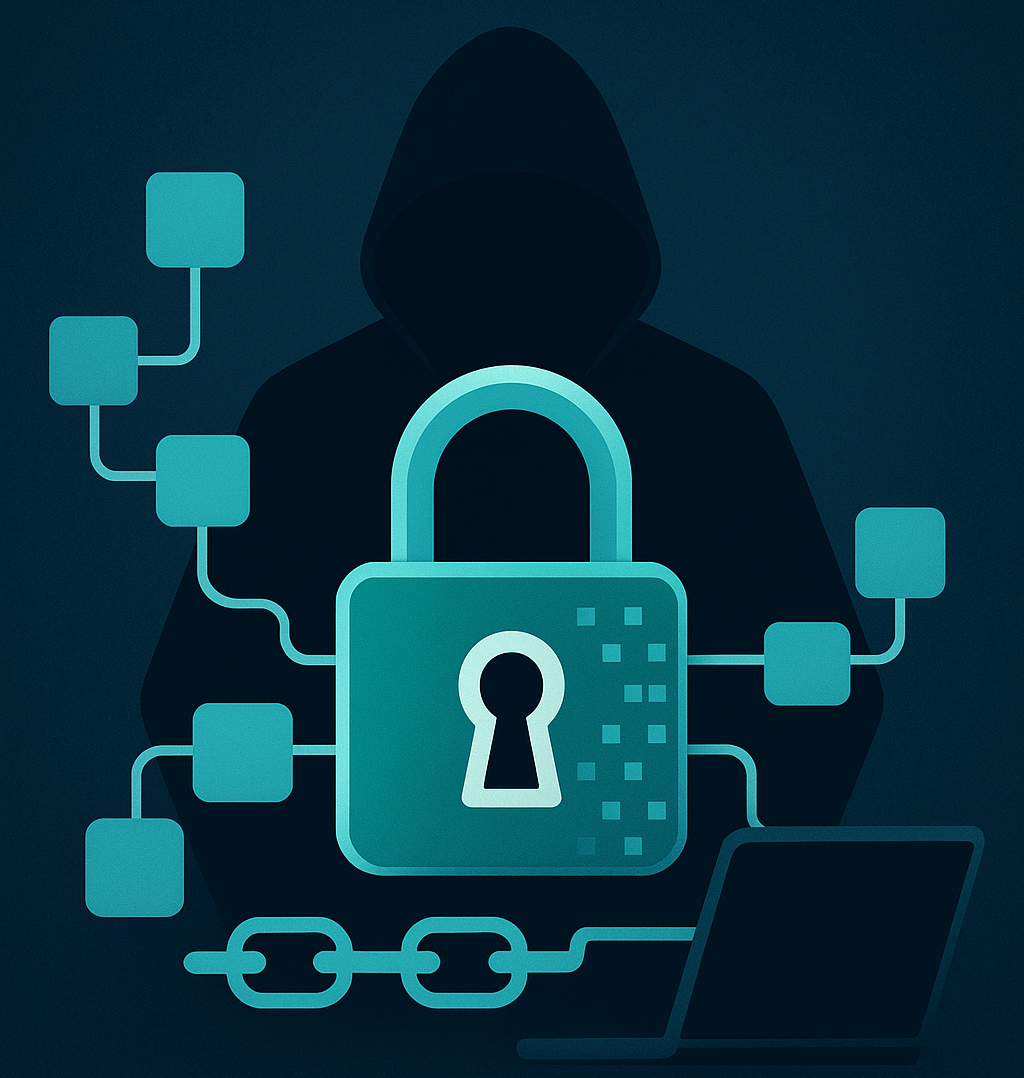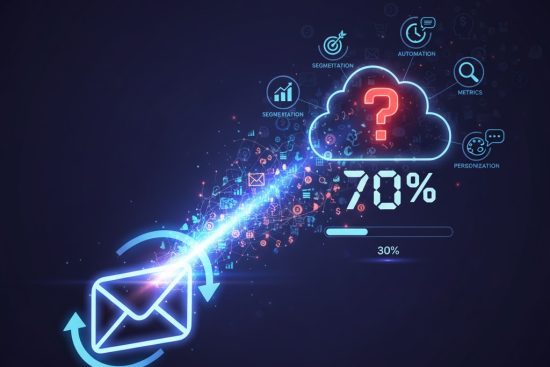
Introduction
Did you know that, according to recent studies, every 11 seconds a company in the world is the victim of a ransomware attack? The most alarming thing is that these threats are not limited to large corporations: small and medium-sized companies are also targeted by cybercriminals.
The Ransomware-as-a-Service (RaaS) has revolutionized the way digital attacks operate, allowing even non-technical people to launch devastating offensives against businesses like yours.
In this scenario, knowing what RaaS is and how to prevent it is not optional, it is essential. This is where ClickPandaa technological ally that combines secure hosting, SSL certificates, automatic backups and 24/7 support to keep your business protected against these growing threats.
Table of Contents
What is Ransomware-as-a-Service (RaaS)?
RaaS is a model in which cybercriminals offer "off-the-shelf ransomware" as if it were just another digital service. Through the dark web, anyone can pay a subscription and access tools that lock systems and hijack data in exchange for a ransom.
Unlike traditional ransomware, where the attacker had to have advanced technical knowledge, with RaaS criminals simply rent the software. This has multiplied the number of attacks in recent years, making it much more accessible and dangerous.
Origin and evolution of RaaS
The concept of Ransomware-as-a-Service (RaaS) is born out of the same logic used by many legitimate technology companies: offering a digital product under a subscription or pay-per-use model. The difference is that here we are talking about cybercrime packaged as a ready-to-use service.
In their early days, more than a decade ago, ransomware attacks were only executed by cybercriminals with high technical expertise. They developed the malicious code themselves, searched for vulnerabilities, distributed the malware and managed the ransom payments. This limited the scope of the attacks, because it required a lot of time and resources.
With the rise of the dark web and cryptocurrencies, the equation changed. Ransomware developers saw an opportunity: to create easy-to-use platforms where anyone, even without advanced skills, could become an attacker in exchange for payment. Thus RaaS was born.
Examples of known groups operating with RaaS
REvil (or Sodinokibi): One of the most famous groups, responsible for global attacks on software vendors and service companies.
DarkSide: The group behind the attack on Colonial Pipeline in the U.S., which paralyzed fuel supplies in much of the country.
LockBit: Known for its affiliate model, which operates almost like a crime franchise.
Difference between attacks 10 years ago and today's attacks
Before: A skilled attacker worked in isolation, targeting specific victims and with limited tools.
Now: Anyone can rent a ransomware kit on the dark web, select a target and launch an attack in minutes. The crime became industrialized and escalated to global levels.
This evolution explains why ransomware has evolved from being an "occasional" problem to becoming a massive and recurrent threat affecting companies of all sizes and sectors.
Why is it so dangerous for companies?
The impact of RaaS can be devastating:
Operations at a standstill: Your systems are inaccessible until a ransom is paid.
Financial damages: Ransoms often exceed thousands of dollars, not counting downtime losses.
Compromised reputation: Your customers may lose confidence if they know that your business was not protected.
Small companies as a target: Criminals know that many SMEs do not have robust security measures in place, which is why they are frequent victims.
Recent cases have shown that one click on a malicious email is enough to put an entire organization in check.
Prevention measures and best practices
The good news is that there are effective ways to minimize the risks:
-
Automatic backups: Restore data without paying ransom.
-
SSL certificates and encryption: Protection in the transmission of sensitive information.
-
Constant monitoring: Servers monitored 24/7 to detect threats in real time.
-
Staff training: An informed computer is the first line of defense against phishing and other tactics.
In addition to these measures, adopting a Zero Trust security can enforce protection by assuming that no connection is secure by default. Discover how to implement Zero Trust in your company
RaaS business models
The Ransomware-as-a-Service works like any legitimate digital platform... but in the service of crime. Ransomware developers create the software and make it available to other attackers, who pay to use it. This is how different business models are born:
Monthly or annual subscription:
It works like a Netflix or Spotify subscription, but in this case, the "user" accesses a control panel from which they can launch attacks, manage victims and even receive malware updates. This model makes it easier for more criminals to join, as it lowers the barrier to entry.Pay-per-use:
There are no fixed costs here. The attacker only pays if he succeeds in infecting a victim. This model is attractive because it makes RaaS a low-risk service for criminals, increasing the number of attacks spread around the world.Commission on redemption:
In this case, the ransomware developer receives a percentage of the ransom paid by the victim, as if it were a business partner of the attacker. This scheme fosters a "black market" of affiliates where everyone wins, except the affected company.
These models demonstrate why RaaS is growing so fast: it is cost-effective, affordable and easy to replicate.
Most common attack vectors
Cybercriminals exploit multiple gateways to deploy RaaS. The most prevalent are:
Fraudulent e-mails (phishing):
A single email with a link or attachment can be enough to compromise your entire system. Many companies fall because the emails are disguised as invoices, bank notifications or messages from suppliers.Unpatched vulnerabilities in software or CMS:
Platforms such as WordPress are widely used, and if they are not updated, they become an easy target. Attackers exploit known flaws to remotely install ransomware.Unprotected remote access (RDP):
Accessing remote desktops improperly configured or without strong authentication is like leaving the front door open. This vector is one of the most commonly used to take full control of a company's servers.Malicious downloads from insecure sites:
From so-called freeware to "pirated" files, any unverified download can hide ransomware. One click is all it takes to start the disaster.
Knowing these vectors helps companies to strengthen their security at the most vulnerable points.
How ClickPanda protects your business
At ClickPanda we understand that prevention is key in cybersecurity. That is why our plans include:
Secure and optimized hosting against attacks.
Free SSL on all plans to protect your customers' information.
Automatic daily backupsready to restore your website in minutes.
24/7 technical supportalways available to help you.
Safe and uninterrupted migration from other suppliers.
Scalable and competitive plans adapted to the growth of your company.
With ClickPanda, your business not only grows online, but also remains shielded against digital threats.
Don't leave your company's security to chance. Contract your secure hosting today with ClickPanda and keep your data protected against ransomware.
Conclusion
The Ransomware-as-a-Service is a real and growing threat, and no company is completely exempt from being attacked. However, prevention will always be cheaper and more effective than dealing with the consequences of a successful attack.
With solutions like those offered by ClickPanda, you can ensure that your business stays one step ahead of cybercriminals.
In cybersecurity, the best defense is prevention. Protect your business with ClickPanda and ensure a reliable and secure digital future.








